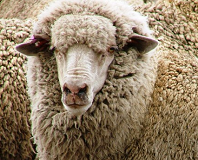Read the latest information on
Foot-and-mouth disease
 In some rare, but great news, ovine Johne’s disease (OJD) – a disease that has caused significant sheep losses in the past – is being detected in less animals inspected as part of the National Sheep Health Monitoring Project (SHMP).
In some rare, but great news, ovine Johne’s disease (OJD) – a disease that has caused significant sheep losses in the past – is being detected in less animals inspected as part of the National Sheep Health Monitoring Project (SHMP).
This encouraging trend comes out of the data collected from the 1 to 1.5 million mutton sheep inspected every year as part of the NSHMP. This trend indicates that the level of JD infection in Australian sheep flocks has declined, but as Animal Health Australia’s Biosecurity Manager Dr Rob Barwell explained, while the big picture may look promising, there’s always work to do in managing this disease.
“The data we have gathered over the past ten years has shown us that infection rates in inspected sheep lines have demonstrated a downward trend in all states. However, there are some regions that have not shown the same level of decline which means we need to get the message out there to all sheep producers to improve their management practices to manage the disease on farm or avoid it coming onto their farms.” said Dr Barwell.
“At this stage, we are attributing the reduction in infection levels to a strong take up of the JD vaccine (Gudair), which is one, but certainly not the only tool to help manage the disease. Producers do need to keep using the vaccine, even when they’re not seeing cases on farm; it can re-emerge if stopped.
“It is important to remember that JD usually enters a flock through the introduction of infected sheep or stray animals. Sheep droppings and contaminated run-off can also spread the infection between farms once it has ‘seeded’ into an area and the risk of spreading infection via natural waterways and floodplains is also present,” said Dr Barwell.
Dr Barwell provided five key biosecurity tips for sheep producers to help avoid JD in their sheep:
All sheep producers are encouraged to visit the sheep page on the Farm Biosecurity website for the Sheep Health Statement or visit ojd.com.au to learn more about the disease.